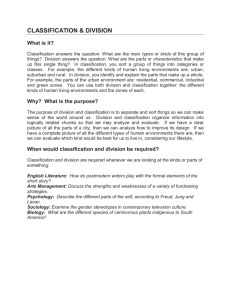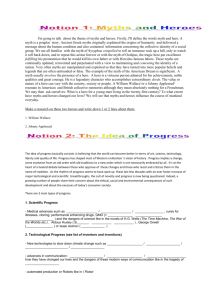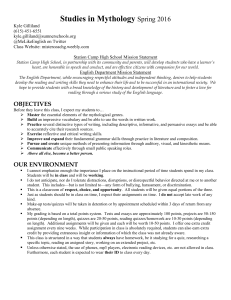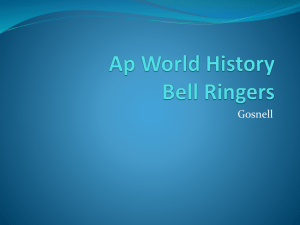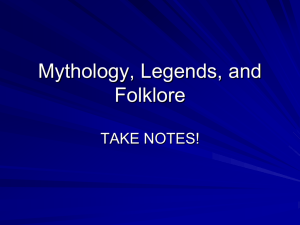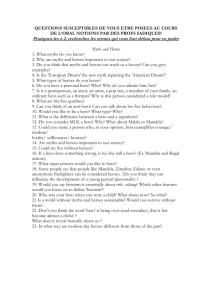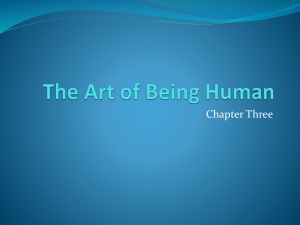Oral Literature: Myths and Legends A. Devices 1. Repetition 2
advertisement
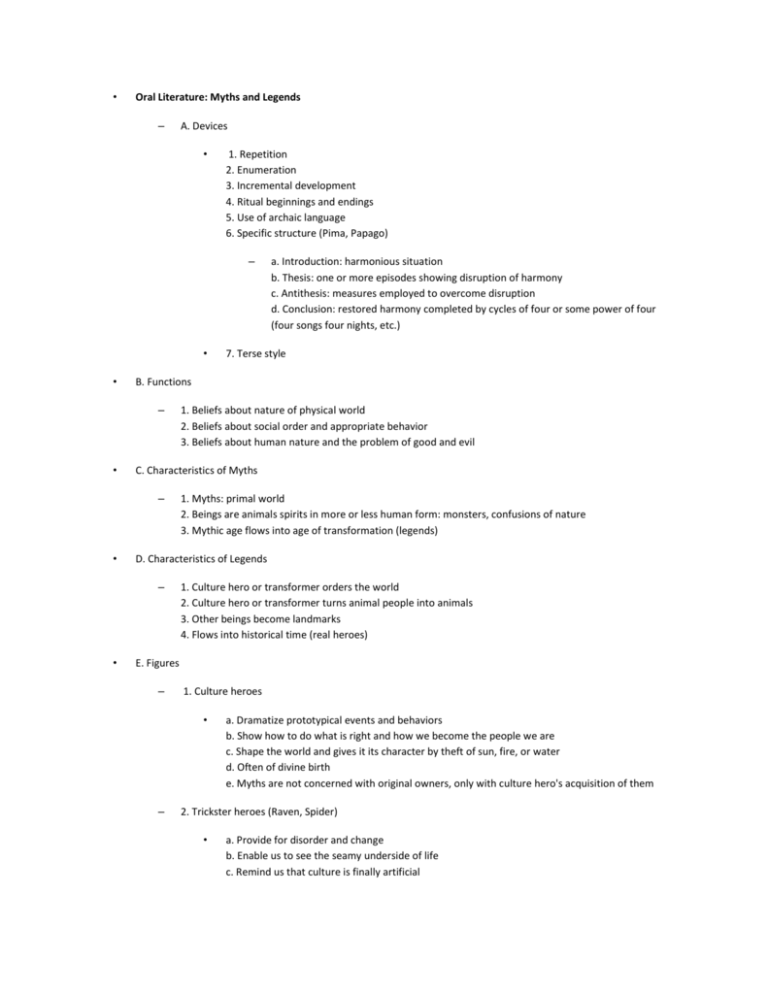
• Oral Literature: Myths and Legends – A. Devices • 1. Repetition 2. Enumeration 3. Incremental development 4. Ritual beginnings and endings 5. Use of archaic language 6. Specific structure (Pima, Papago) – • • 1. Myths: primal world 2. Beings are animals spirits in more or less human form: monsters, confusions of nature 3. Mythic age flows into age of transformation (legends) D. Characteristics of Legends – • 1. Beliefs about nature of physical world 2. Beliefs about social order and appropriate behavior 3. Beliefs about human nature and the problem of good and evil C. Characteristics of Myths – • 7. Terse style B. Functions – • a. Introduction: harmonious situation b. Thesis: one or more episodes showing disruption of harmony c. Antithesis: measures employed to overcome disruption d. Conclusion: restored harmony completed by cycles of four or some power of four (four songs four nights, etc.) 1. Culture hero or transformer orders the world 2. Culture hero or transformer turns animal people into animals 3. Other beings become landmarks 4. Flows into historical time (real heroes) E. Figures – 1. Culture heroes • – a. Dramatize prototypical events and behaviors b. Show how to do what is right and how we become the people we are c. Shape the world and gives it its character by theft of sun, fire, or water d. Often of divine birth e. Myths are not concerned with original owners, only with culture hero's acquisition of them 2. Trickster heroes (Raven, Spider) • a. Provide for disorder and change b. Enable us to see the seamy underside of life c. Remind us that culture is finally artificial d. Provide for the possibility of change e. May be overreachers who gets their comeuppance • F. Themes – 1. Formation of the world through struggle and robbery (Pacific coast) 2. Movement from a sky world to a water world by means of a fall (Iroquoian) 3. Fortunate fall; creation story 4. Earth-diver myth • • a. flood that occurred after creation of the universe b. recreation of the present world out of mud brought up from under the water by the earth-diver (muskrat or waterbird) 5. Theft of fire 6. Emergence myths: • a. ascent of beings from under the surface of the earth to its surface b. ascent from a series of underworlds • 7. Migration myths: accompany emergence myths • GROUP QUESTIONS: 1.In the Pima story of the flood, what images or details indicate imbalance in the social order? 2. Why might the story be linked to the birth of the child from the young man who turns into a pregnant woman? 3. How can we account for Juhwertamahkai's behavior during and after the flood? The two doctors, Juhwertamahkai and Ee-eetoy, and the person/animal Toehahvs (Coyote) face directions that may imply territories or tribal lands, and they make new dolls, or persons, to replace those who have drowned. 4. Juhwertamahkai deliberately makes dolls that will not survive "because he remembered some of his people had escaped the flood thru a hole in the earth, and he intended to visit them and he did not want to make anything better than they were to take the place of them." But the defective dolls break into pieces; Juhwertamahkai turns into waste and excretion. Why might such events be included in a creation story? 5. The Judeo-Christian accounts of the beginning of the world emphasize a grand design and purpose and an essential order in the natural world. 6. Do these Native American creation stories put similar importance on the centrality of humankind and on an overall plan? 7. Where do you see similarities and differences with regard to this theme? Travel Narratives: • Basics: "Barbaric" rituals, threats of death, physical suffering, triumph of the European hero: – 1. Difficult ocean passage – 2. Deriding earlier reports – 3. Reporting advantages of European technology – 4. Describing New World geography – 5. Mixing practical advice with rhetorical landscape descriptions – 6. Nature and "savages" as friendly and ferocious – 7. Expedition plagued by intrigue and disunity – 8. Emphasizing flaws and virtues of the expedition leaders – 9. Comparison of virtues of life in a strange foreign land with the idleness and corruption of the old world – 10. New World plenitude: the catalogue of delights – 11. Initial successes followed by defeats
